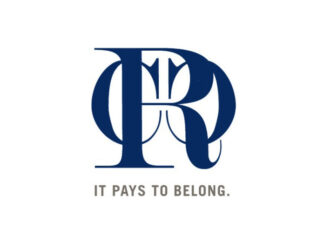 Victoria Day. Week 10 of social distancing and self-isolation. It’s a holiday, yet today feels just like every other day since this global pandemic wreaked havoc on our lives. I’m writing in the silent, early morning which feels very much like a traditional Sunday. It reminds me of a friend’s recent post on Facebook referencing the title of a 1988 Morrissey song, “Everyday is Like Sunday.” I know it’s a holiday because Jarvis Street in downtown Toronto is eerily quiet, and I don’t have my regular daily review meeting. I reply to texts from my parents, whom I didn’t get to see either at Easter or Mother’s Day. As I look through my emails, I see that another event on my calendar has been postponed indefinitely with no information about ticket refunds. Summer was shaping up to be musically charged, with events and concerts every other week. Big names too, like Janet Jackson, Lady Gaga and the Pet Shop Boys, but that was then…. Who knows what this new summer will bring. I mean, it snowed in May on Mother’s Day in Toronto!
Victoria Day. Week 10 of social distancing and self-isolation. It’s a holiday, yet today feels just like every other day since this global pandemic wreaked havoc on our lives. I’m writing in the silent, early morning which feels very much like a traditional Sunday. It reminds me of a friend’s recent post on Facebook referencing the title of a 1988 Morrissey song, “Everyday is Like Sunday.” I know it’s a holiday because Jarvis Street in downtown Toronto is eerily quiet, and I don’t have my regular daily review meeting. I reply to texts from my parents, whom I didn’t get to see either at Easter or Mother’s Day. As I look through my emails, I see that another event on my calendar has been postponed indefinitely with no information about ticket refunds. Summer was shaping up to be musically charged, with events and concerts every other week. Big names too, like Janet Jackson, Lady Gaga and the Pet Shop Boys, but that was then…. Who knows what this new summer will bring. I mean, it snowed in May on Mother’s Day in Toronto!
The Best Laid Plans
My summer concert scheduled was not the only thing wiped clean. As a reminder, StatsRadio’s mission is to innovate the business of Radio, which continues to be an excellent and effective local-broadcast communication tool. Since our service can be deployed in very small or complex markets, we were able to continue providing our services during confinement. Contrary to reports by other Canadian audience measurement organizations, the majority of StatsRadio’s clients saw an increase in reach. In any case, while deploying our services across Canada during 2019, we noticed that the needs of local advertisers varies from market to market. With the help of the radio stations’ sales teams, our Customer Success plan for 2020 was to conduct community outreach with local advertisers, get a feel for their current challenges and, if required or appropriate, brainstorm and quickly prototype solutions. The project was to be called ReConnection 2020.
 The idea behind this exercise was to utilize design-thinking principles (empathy, define, ideate, prototype and test) to improve the sales process, pry open groupthink and co-create new products. In other words, the plan was to innovate. We planned to go with radio station sales representatives to meet local advertisers, not to sell them anything, but to listen to them and build rapport. The pitch would come later, when we knew what would benefit them.
The idea behind this exercise was to utilize design-thinking principles (empathy, define, ideate, prototype and test) to improve the sales process, pry open groupthink and co-create new products. In other words, the plan was to innovate. We planned to go with radio station sales representatives to meet local advertisers, not to sell them anything, but to listen to them and build rapport. The pitch would come later, when we knew what would benefit them.
Well, 2020 had other ideas. Just like the rest of this (and every) industry, StatsRadio had to pivot. In full irony, though our exercise became moot, the title ReConnection 2020 encapsulates even more perfectly our current circumstances.
Locked down and isolated, pretty much every person on earth has been forced to find new ways to reconnect with clients, colleagues, service providers, loved ones and friends.
 Although physically distant from all but one other person, I feel like I’ve never been more connected to my networks of people. I’ve reconnected via videoconference, telephone, social media, chat, SMS and email with family, new and old friends, past and current colleagues, classmates and clients. We’ve visited IRL (in real life) with a few friends out-of-doors, maintaining a safe distance of course. Most of all, I’ve gotten to know my partner of 23 years so much better; when else have we ever gotten to spend ten weeks, 24/7, together? The forced confinement became a beautiful opportunity for self-reflection.
Although physically distant from all but one other person, I feel like I’ve never been more connected to my networks of people. I’ve reconnected via videoconference, telephone, social media, chat, SMS and email with family, new and old friends, past and current colleagues, classmates and clients. We’ve visited IRL (in real life) with a few friends out-of-doors, maintaining a safe distance of course. Most of all, I’ve gotten to know my partner of 23 years so much better; when else have we ever gotten to spend ten weeks, 24/7, together? The forced confinement became a beautiful opportunity for self-reflection.
I miss the physical contact with my biological and chosen family, but I don’t feel disconnected from them. I think many of us experienced a flurry of reconnection in reaction to outside forces, an urge to reach out as we strove to make sense of danger, isolation and constantly shifting conditions.
By week 10 of internal transition in response to these drastic external changes, most of us have reached, and are moving through, that most creative stage, the Neutral Zone (See my previous column, referencing William Bridge’s three stages of transition: Death, Neutral and New Beginning). Many have established new daily routines, though we understand them to be temporary. We know that a subsequent transition is inevitable, as the world “reopens.”
Planning and Pivoting
 I’ve written before that Strategic Foresight is the analysis of trends (behaviour repeated over time) with the purpose of building plausible scenarios of what the future may look like. However, we can only create our preferred future through planning and implementing. This brings us to the Strategy in Strategic Foresight. Scenarios based on trend analysis are the foundation for building and testing a strategy – the plan for implementing or manifesting a preferred future. It’s important to note that strategy and tactics are often confused. Strategy is the big picture, the overarching goal and plan; tactics are the activities employed to enact that plan.
I’ve written before that Strategic Foresight is the analysis of trends (behaviour repeated over time) with the purpose of building plausible scenarios of what the future may look like. However, we can only create our preferred future through planning and implementing. This brings us to the Strategy in Strategic Foresight. Scenarios based on trend analysis are the foundation for building and testing a strategy – the plan for implementing or manifesting a preferred future. It’s important to note that strategy and tactics are often confused. Strategy is the big picture, the overarching goal and plan; tactics are the activities employed to enact that plan.
Since the last Rethinking Media article was published, numerous articles and webinars have come out, dedicated to exploring what the post-pandemic world might look like. People at every level of society and in every industry have been trying to envision their new normal. I’ve personally been volunteering time to work with seasoned volunteer manager Adriane Beaudry on a Future of Volunteering and Fund-Raising project, collecting current trends that might impact these domains post-pandemic. Because of the high level of uncertainty, we are creating scenarios at very conservative horizon lines, one to five years, maximum.
When the pandemic hit, people were forced to changed behaviour overnight, without the luxury of time to strategize long-term. Survival called for short-term planning, and among other odd outcomes, the toilet paper supply chain suffered.
As we approach the post-pandemic transition, there are two ways to go. Some may opt to wait and see what the next round of policies will bring and adapt to subsequent market behaviour. I see this as a high-risk strategy, because it invites someone else to decide what your new normal will look like.
I strongly advise taking a proactive approach, like Stingray Radio did. They recently announced an “economic stimulus” post-pandemic plan. Stimulating the economy is their strategy; offering discounted advertising rates is the tactic.
 Strong strategy requires strong vision. The value of creating scenarios from trend analysis is that it provides a reality- and sanity-check, strengthening strategy by sharpening the underlying vision. For example, I was part of a team in 2010 focused on the Future of Finance. We wanted to explore changes in consumer-to-business payment methods. This big bank’s vision was to weather increased in competition stemming from emerging technology (think mobile payment). We built a scorecard and compared their strategy against each scenario. This work highlighted new opportunities, critical uncertainties and assessed risks, allowing the bank to sharpen its vision of their desired future and as a result, strengthen its strategy. The process might sound onerous, but in this case, the entire exercise took under two hours.
Strong strategy requires strong vision. The value of creating scenarios from trend analysis is that it provides a reality- and sanity-check, strengthening strategy by sharpening the underlying vision. For example, I was part of a team in 2010 focused on the Future of Finance. We wanted to explore changes in consumer-to-business payment methods. This big bank’s vision was to weather increased in competition stemming from emerging technology (think mobile payment). We built a scorecard and compared their strategy against each scenario. This work highlighted new opportunities, critical uncertainties and assessed risks, allowing the bank to sharpen its vision of their desired future and as a result, strengthen its strategy. The process might sound onerous, but in this case, the entire exercise took under two hours.
This strategic foresight exercise enables us to assess quickly how clear our vision is and how risky our strategy. Better to figure that out early than when the organization has invested considerable amounts of time, energy, effort and money. Then, with that new clarity, we can adopt Eric Ries’ methodology in “The Lean Startup”: pivot. In other words, change to adapt to changed circumstances.
Sociologist and philosopher Niklas Luhmann posited that what connects two individuals within a social system is communication. We in the broadcasting industry are in the business of connecting: content to audiences and consumers to advertisers. Although life is extremely challenging right now, this is a great opportunity to reimagine how we reconnect with our clients, our audiences and each other. Why not participate proactively in designing and defining your organization’s post-pandemic normal?
What’s your vision of tomorrow? Would strategic foresight work help clarify and define it? How will you bring the desired future about?
Curious about trend analysis and scenario creation, the work done with Adriane Beaudry or any of the ideas shared in this article? Please contact me at eblais@statsradio.com.




